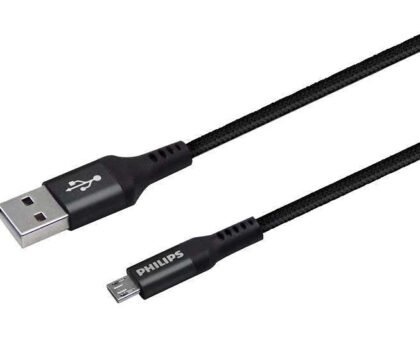
Introduction
An optical sensor is an essential component in many modern electronic systems. These sensors utilize light to detect changes in their environment and convert the data into a readable signal. Their ability to monitor, measure, and control various factors makes them invaluable in diverse applications, ranging from consumer electronics to industrial machinery. In this blog, we will explore the working principles, types, and applications of optical sensors.
What Is an Optical Sensor?
An optical sensor is a device that detects light, including infrared and ultraviolet radiation, and converts it into an electrical signal. These sensors play a vital role in numerous systems, enabling precise measurements and effective automation in various sectors such as electronics, safety, industrial automation, and more.
How Do Optical Sensors Work?
Optical sensors operate by emitting light and measuring its reflection, absorption, or transmission. The sensor typically consists of a light source, a detector, and often a processing unit to analyze the data. The light source can vary, including LEDs, lasers, or infrared emitters, depending on the type of optical sensor.
When light interacts with an object or surface, it can be reflected, absorbed, or transmitted. The sensor’s detector captures these changes and converts them into a signal, which can then be processed. For example, in a simple proximity sensor, the amount of reflected light indicates the presence of an object, while more advanced optical sensors can measure complex parameters like temperature, pressure, or distance.
Types of Optical Sensors
Optical sensors come in various types, each designed for specific applications. Let’s look at some of the most common ones:
Photoelectric Sensors
Photoelectric sensors detect objects or changes in the environment by measuring the interruption or reflection of a light beam. They are widely used in automation systems, packaging lines, and robotic controls. These sensors can be further divided into:
- Through-beam sensors: Emit light from the sensor to a receiver.
- Retro-reflective sensors: Reflect light off an object back to the sensor.
- Diffuse sensors: Use the same sensor to emit and receive light from an object.
Infrared Sensors
Infrared sensors detect infrared radiation, commonly emitted by objects due to their temperature. These sensors are often used for temperature measurement, motion detection, and object classification in industrial settings. Infrared sensors can operate in low-light environments, making them highly effective in security and safety applications.
Optical Encoders
Optical encoders are used in applications requiring precise positioning and movement control. They detect changes in light patterns as an object moves across a light grid. Optical encoders are commonly found in robotics, computer peripherals, and industrial machinery.
Fiber Optic Sensors
Fiber optic sensors use optical fibers to transmit light. These sensors are known for their ability to detect physical changes like strain, temperature, and pressure over long distances. They are used in harsh environments, such as aerospace, oil and gas, and medical industries.
Applications of Optical Sensors
Optical sensors are found in a wide range of industries, enabling smarter, more efficient systems. Below are some common application areas:
Electronics and Consumer Devices
In electronics, optical sensors are integral to products such as smartphones, laptops, and smart home devices. They detect ambient light for automatic screen brightness adjustment, measure motion for security cameras, and help with touchless controls. Optical sensors are also used in barcode scanners, printers, and cameras for accurate data collection and transmission.
Safety and Security Systems
Optical sensors are crucial for enhancing safety and security. Motion detectors, alarm systems, and smart cameras rely on optical sensors to detect movement, changes in light levels, or even identify faces through optical recognition technology. Additionally, optical smoke detectors use light to detect particles in the air, offering early warnings in case of fire hazards.
Industrial Automation
In industrial automation, optical sensors are used in quality control, robotic systems, and material handling. These sensors monitor product alignment, detect packaging defects, and ensure that machines operate within specified parameters. Proximity sensors, for example, help in detecting object positions, ensuring smooth functioning of automated systems.
Medical and Healthcare
In the medical field, optical sensors are used in diagnostic equipment, such as endoscopes, spectrometers, and pulse oximeters. These sensors play an essential role in measuring oxygen levels, analyzing blood samples, and providing precise imaging for medical procedures.
Automotive Industry
Optical sensors have also found applications in the automotive sector, especially for advanced driver-assistance systems (ADAS). These sensors help in parking assist, lane-keeping, and adaptive cruise control by detecting objects, road signs, and vehicles. Optical sensors in vehicle cameras also enhance safety by enabling collision avoidance features.

Benefits of Using Optical Sensors
Optical sensors offer several advantages that make them indispensable in modern technology. Here are some key benefits:
- Non-contact Measurement: Optical sensors can measure objects or conditions without physical contact, reducing wear and tear.
- High Precision and Accuracy: These sensors offer precise measurements, essential in critical applications like industrial automation and healthcare.
- Versatility: Optical sensors are available in various types and configurations, making them adaptable to different industries.
- Durability: Many optical sensors are designed to withstand harsh environments, including extreme temperatures, humidity, and electromagnetic interference.
Challenges and Considerations
While optical sensors are versatile, they come with certain challenges that need to be considered during selection and implementation:
- Environmental Interference: Optical sensors can be affected by dust, fog, and extreme lighting conditions. Proper housing and shielding may be required to maintain accuracy.
- Cost: High-precision optical sensors, particularly in specialized applications, can be more expensive compared to other sensor types.
Conclusion
Optical sensors are integral to modern technological systems, offering a wide range of applications across industries such as electronics, safety, industrial automation, and healthcare. With their high precision, versatility, and non-contact measurement capabilities, optical sensors continue to shape the future of innovation. As these sensors become more advanced, their role in automation, safety, and monitoring systems will only continue to expand, offering more opportunities for increased efficiency and productivity across various sectors.


